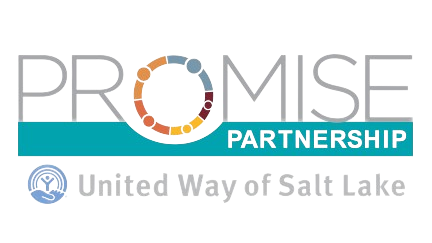Welcome to Caitlin Schneider, Senior Network Director at United Way of Salt Lake!*
In 2021, Utah’s incoming governor Spencer Cox outlined a plan – the One Utah Roadmap – to address key priorities for the state in his first 500 days, ranging from coordinated COVID response to addressing the social determinants of health. In support of these priorities, the Governor’s office formed a working group focused on the prospect of “improving social determinants of health (SDOH) service delivery.” United Way of Salt Lake was invited to co-chair this committee in collaboration with Utah’s Department of Health and Human Services. In this blog post, I will share a summary of our experience and consider the path ahead.
The One Utah Roadmap’s SDOH working group was comprised of subject matter experts, public health officials, community-based organizations, and client advocates interested in more effectively coordinating care, sharing information, and meeting people’s needs.
We invited Greg Bloom, on behalf of Open Referral, to address the committee during our initial meeting. During that first conversation, we observed that there are a variety of efforts to facilitate the sharing of information already underway in our communities. Among members of the working group and beyond, we recognized multiple systems in use for coordinating care among organizations, multiple resource referral systems, and even a Health Information Exchange. This meant that we already have valuable assets with which we can work to achieve our objectives of improving coordination of care and, with that, health and social outcomes.
We also observed that the prospect of making “warm referrals” is just one use case among many for such coordination of care (such as care team planning, document sharing, benefits enrollment, and so on).
And, last in this list but certainly not least, we observed that there are a range of significant and valid concerns among stakeholders about the implications of collecting and circulating more information about people in need – significant known and unknown risks (even from HIPAA-compliant and otherwise lawful activities) that need to be considered alongside hypothetical benefits.
Through this conversation, a consensus emerged that the path forward should be the development of a “community information exchange” as first articulated by our friends at 2-1-1 San Diego. San Diego CIE explains that a CIE is best understood not as a centralized software system that everyone will use instead of their own software, but rather as “infrastructure” that enables interoperability across a distributed ecosystem of many software systems used by many organizations. And the most important element of San Diego’s CIE example is that it is “community-led” – governed by local stakeholders whose priorities and concerns should determine the course of action.
After this initial meeting, we asked Greg to help us design and facilitate our subsequent dialogues. Through this process, our consensus took further shape. What had previously been a source of confusion (or even anxiety) for many became instead a matter of open-ended possibilities which we were invited to explore. We set aside questions about the various pros or cons of various software vendors, and instead asked what kind of future the stakeholders wanted to build together. What common purpose do we share? What are the values and principles that guide us in our work?
Over the course of several months, we articulated and affirmed a set of these foundational statements. We articulated the core values and principles that we all shared – such as “equitability,” “centering impacted stakeholders in decision-making,” and “anticipating and mitigating any possible harms” – and considered what they really meant in this context. In this way, the focus of our conversation shifted further – from questions focused on technology design and procurement to questions of governance: who should decide what? To whom would those decisions be accountable? What should happen when something goes wrong?
Those of us who participated in the One Utah SDOH Working Group have only taken some initial steps along this journey, but we now have a clear vision for where we want to go: together, we assembled our foundational elements into the first section of a prospective charter for a future Community Information Exchange. We’ve drafted “use cases” that describe real-world contexts in which information exchange capabilities would help providers coordinate their efforts more effectively to improve service access and outcomes. We’ve described a hypothetical scenario in which a pilot project could prototype these capacities, along with the processes for decision-making and accountability that can ensure such an initiative will be equitable and appropriate. And we’ve built trust among a key set of leading institutions who are now positioned to drive this work forward.
Promise Partnership Utah at United Way of Salt Lake* is now looking to pilot test this strategy in two high-opportunity communities where there is both a need for this infrastructure and also leadership and willing partners in place to help us test this approach. We plan to utilize the foundational work this subcommittee laid out in order to develop the governance, human capacities, and technological capacities needed in order to meet the basic needs of students and families in our communities. We also plan to use this pilot to test, iterate, and develop the learnings necessary to spread and scale this work statewide.
We’d welcome opportunities to collaborate with other stakeholders in Utah, and would be glad to share more about our process and prospective strategy with others who are working on Community Information Exchange initiatives. Reach out to me to learn more!
*As of July 1, 2023, Promise Partnership Utah, 211, and United Way of Salt Lake will be subsidiaries of Utah’s Promise.


Leave a Reply